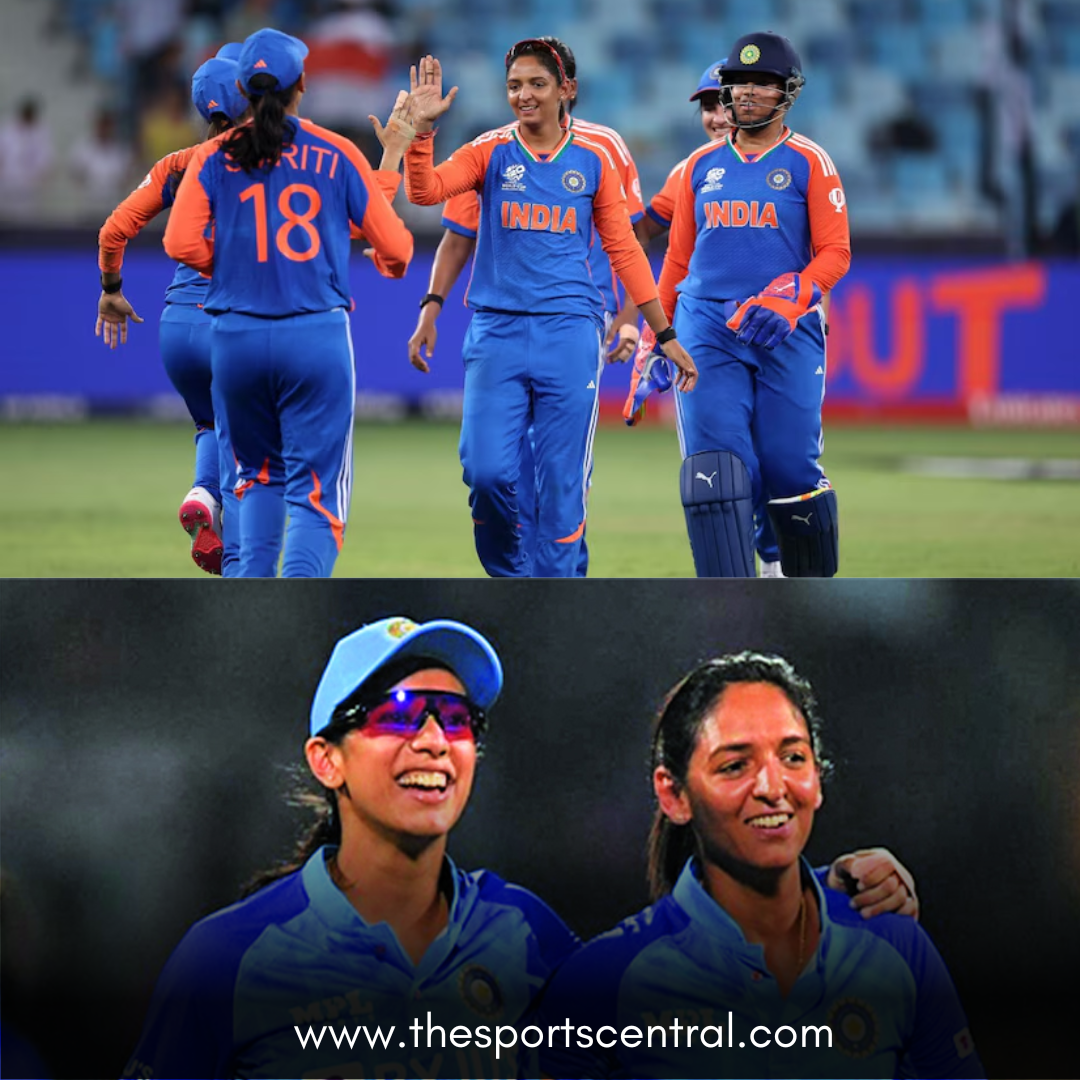The year 2025 promises to be an exhilarating one for the Indian Women’s Cricket Team, packed with high-profile international series and a marquee event in the ICC Women’s ODI World Cup. As women’s cricket continues to gain momentum globally, fans will be treated to thrilling encounters as India takes on some of the best teams in the world.
Here’s a complete breakdown of the Indian Women’s Cricket Team’s schedule for 2025, including dates, venues, and key matchups.
June-July 2025: India Tour of England
- Dates: June 28 – July 22
- Host: England
- Matches: 5 T20Is, 3 ODIs
The Indian Women’s team kicks off their international schedule with a challenging tour of England, where they will play a combination of five T20Is and three ODIs. This tour will be crucial in setting the tone for the team, offering a competitive series against one of the strongest teams in women’s cricket.
Key Points:
- The five T20Is will be an exciting contest as both teams are known for their aggressive approach in the shortest format.
- The ODI series will serve as an excellent opportunity for India to test their combination ahead of the ICC Women’s ODI World Cup.
- England will have home advantage, but India’s squad boasts experienced players who have previously performed well in English conditions.
September 2025: Australia Tour of India
- Dates: September (Exact dates TBD)
- Host: India
- Matches: 3 ODIs
Fresh off the England series, India will host Australia for a three-match ODI series. This series is particularly significant as Australia has been one of the most dominant teams in women’s cricket. It will also serve as a perfect preparatory contest for the World Cup, which follows immediately after.
Key Points:
- Australia vs. India is always a high-intensity contest, given the history of close encounters between the two sides.
- Playing at home gives India the advantage of familiar conditions, allowing them to fine-tune their squad ahead of the World Cup.
- The three-match series will be an excellent platform for key players like Smriti Mandhana, Harmanpreet Kaur, and Shafali Verma to find form.
September-October 2025: ICC Women’s ODI World Cup
- Dates: September – October (Exact dates TBD)
- Host: India
- Matches: ODIs
The biggest event of the year will be the ICC Women’s ODI World Cup, scheduled to take place in India. This is a landmark event for Indian cricket as the country hosts the Women’s ODI World Cup, bringing immense excitement and expectations.
Why This is Huge for India:
- Hosting the World Cup means Indian players will be more comfortable with pitch conditions and weather.
- With the growing support for women’s cricket in India, home crowds are expected to play a big role in lifting the team’s performance.
- India has been a strong ODI side in recent years, and this could be their best chance to secure their maiden World Cup title.
India’s Previous World Cup Performance:
- India finished as runners-up in the 2017 Women’s ODI World Cup, narrowly losing to England in the final.
- In 2022, India had a mixed campaign, failing to make it to the knockouts.
- With a young and dynamic squad, the 2025 edition presents a golden opportunity for India to make history on home soil.
Teams to Watch Out For:
- Australia: The defending champions will be tough to beat.
- England: A strong team with a deep batting and bowling lineup.
- New Zealand: Known for their consistency in global tournaments.
- South Africa & West Indies: Dark horses who could spring surprises.
The Indian team’s performance in the World Cup will be the highlight of the year, and fans across the country will be eager to see them bring home the trophy.
December 2025: Bangladesh Tour of India
- Dates: December (Exact dates TBD)
- Host: India
- Matches: 3 ODIs, 3 T20Is
To close the year, the Indian Women’s team will host Bangladesh for a limited-overs series consisting of three ODIs and three T20Is.
Key Points:
- This series will be an opportunity for India to try out young players and build squad depth.
- Bangladesh has been improving steadily in women’s cricket, and their competitive spirit will make for an interesting series.
- The T20I series will help India fine-tune their strategies for the Women’s T20 World Cup scheduled for 2026.
What to Expect from India in 2025?
1. Major Focus on ODI Cricket
With the World Cup on home soil, the Indian team’s focus will be heavily on ODI cricket. The England and Australia series will be crucial in preparing for the global event.
2. Strong Performances from Star Players
Key players like Smriti Mandhana, Harmanpreet Kaur, Jemimah Rodrigues, Deepti Sharma, and Renuka Singh will be expected to lead from the front. Additionally, young talents such as Shafali Verma and Richa Ghosh will play pivotal roles.
3. Home Advantage in World Cup
Playing in India will give the team a significant advantage, as they will be accustomed to the conditions and backed by passionate home crowds.
4. T20 Focus Towards Year-End
The December series against Bangladesh will allow the team to start preparing for the Women’s T20 World Cup 2026, which is expected to be another crucial tournament for Indian women’s cricket.
Final Thoughts: A Defining Year for Indian Women’s Cricket
The Indian Women’s Cricket Team’s 2025 schedule is packed with exciting matches against some of the world’s strongest teams. The year is expected to test their abilities across formats, from away tours to home contests and, most importantly, the ICC Women’s ODI World Cup.
As the growth of women’s cricket in India continues, this year could prove to be a turning point for the sport in the country. Fans will be hoping that 2025 will mark the year when India lifts their first-ever Women’s ODI World Cup trophy.
_____________________________________________________________________________
Tennis Stars Slam Anti-Doping System as ‘Broken’
Individual Sports
The world of professional tennis has been rocked by controversy following the handling of high-profile doping cases involving world number one Jannik Sinner and three-time Grand Slam winner Iga Swiatek. Prominent figures in the sport, including world number five Jessica Pegula and top-ranked Aryna Sabalenka, have strongly criticized the system, claiming that it lacks consistency and fairness.
As Sinner’s three-month ban came to an end on Saturday, the fallout from the case has left the tennis fraternity divided, with players questioning the transparency of anti-doping protocols. Meanwhile, Swiatek’s one-month suspension has also raised eyebrows, with many believing the rules and punishments have become arbitrary.
Sinner’s Case: A Controversial Resolution
Italian star Jannik Sinner, the reigning world number one, initially faced a two-year suspension after testing positive for traces of clostebol—a banned anabolic steroid—on two separate occasions in March 2024. Initially cleared of wrongdoing by the International Tennis Integrity Agency (ITIA) in August, his case took a dramatic turn when the World Anti-Doping Agency (WADA) filed an appeal to the Court of Arbitration for Sport (CAS) to challenge his exoneration.
However, in a surprise move, WADA withdrew its appeal and struck a deal with Sinner, reducing his punishment to just a three-month ban. This compromise came after Sinner admitted partial responsibility, citing negligence by his support team, which allegedly led to his failed tests.
In a statement, WADA defended its decision, saying, “Sinner did not intend to cheat, but as an athlete, he is ultimately responsible for his entourage’s actions.”
While the resolution seemingly brought the saga to an end, it has only fueled anger and distrust among fellow players and fans.
Swiatek’s Ban and Similar Controversy
Similarly, three-time Grand Slam winner Iga Swiatek was also hit with a one-month ban for testing positive for trimetazidine (TMZ), a banned heart drug, in late 2024. The 23-year-old Pole cited “personal matters” when she pulled out of the WTA’s Asian swing during September-October, but it was later revealed that her absence was due to an ongoing doping investigation.
Unlike Sinner, Swiatek accepted her punishment without contesting it, saying that she believed the process was fair and that she preferred to focus on “facts rather than opinions.”
However, many in the tennis community believe the leniency in both cases highlights the flaws within the anti-doping system.
Pegula: “The Process Is Completely Broken”
World number five Jessica Pegula, a WTA Players’ Council member and last year’s US Open finalist, did not hold back in her criticism. Speaking ahead of the Dubai Tennis Championships, she questioned the inconsistencies in how doping cases are handled, saying that players have no clear understanding of how rules are enforced.
“I think my reaction is that, whether you think he [Sinner] did or you don’t, or whatever side you’re on, the process just seems to be completely not a process,” Pegula stated.
She expressed concern that tennis’ anti-doping authorities appear to be making decisions arbitrarily, undermining trust in the sport.
“It seems to just be whatever decisions and factors they take into consideration, and they just make up their own ruling. I don’t really understand how that’s fair for players when there’s just so much inconsistency and you have no idea,” Pegula continued.
The American added that players receive emails explaining the doping rulings, but the justifications feel like weak attempts to cover up inconsistencies.
“If you’re clean or not, the process is completely broken. I think it needs to be seriously looked at and considered. They have so much power to ruin someone’s career. I don’t think any of the players trust the process at all right now. Zero. It’s just a horrible look for the sport.”
Sabalenka: “Too Scared to Trust the System”
World number one Aryna Sabalenka also weighed in, revealing that she has lost trust in the anti-doping system and has become extremely cautious to avoid an unintentional violation.
“Before, I wouldn’t care about leaving my glass of water at a restaurant and going to the bathroom. Now, I won’t drink from the same glass,” the Australian Open champion said, expressing fears of accidental contamination.
Sabalenka also pointed out how easy it would be for an athlete to test positive through a minor mistake or negligence from their team, which could result in a career-ending scandal.
“If someone used a cream on you and you test positive, they’re going to go for you, and they’re not going to believe you or anything. You just become too scared of the system. I don’t see how I can trust it.”
Her words echo the concerns of many top players, who feel that innocent athletes could be unfairly punished, while others receive lenient sanctions due to their status or influence.
Kyrgios and Wawrinka Slam the Rulings
Several retired and active players have also condemned the way these cases were handled.
- Nick Kyrgios, known for his outspoken views, described Sinner’s three-month ban as “ridiculous”, taking to social media to vent his frustration.
“Guilty or not? Sad day for tennis. Fairness in tennis does not exist,” Kyrgios wrote on X (formerly Twitter). - Stan Wawrinka, a three-time Grand Slam champion, also expressed disillusionment with the system, posting: “I don’t believe in a clean sport anymore.”
These comments add to the growing sense that tennis authorities have failed to uphold a fair and consistent approach when dealing with doping cases.
What’s Next for Tennis’ Anti-Doping System?
With top players openly criticizing the lack of transparency and consistency in doping rulings, there is growing pressure on the ITIA, WADA, and CAS to reform the anti-doping process.
Some possible changes that could be introduced include:
- More Transparency: Players are demanding clearer communication and standardized punishment guidelines to ensure fairness.
- Stronger Safeguards: Steps must be taken to differentiate between accidental contamination and deliberate doping.
- Improved Testing Protocols: More reliable testing methods could help reduce false positives and prevent unjust suspensions.
With tennis legends and current stars raising serious concerns, it is clear that changes are urgently needed to restore faith in the sport’s integrity.
Conclusion: A Sport at a Crossroads
The recent doping cases of Jannik Sinner and Iga Swiatek have ignited a fierce debate about the fairness of tennis’ anti-doping system. While some believe that the current approach lacks transparency and consistency, others argue that a stricter, well-defined system must be put in place to prevent unfair rulings.
With players like Pegula, Sabalenka, Kyrgios, and Wawrinka publicly criticizing the system, tennis authorities must act quickly to restore trust and credibility.Whether WADA, ITIA, and CAS implement meaningful reforms remains to be seen, but one thing is certain: the current system is under immense scrutiny, and change is inevitable.










